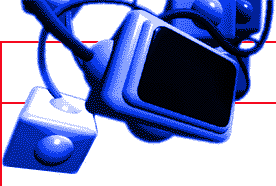Space Station - 2020
Fact-Pak
GOALS:
To understand the methods involved in preparing food for consumption on a space station.
To examine the foods astronauts eat, and identify similar methods of preparation.
To understand the psychological and social aspects of food.
To understand the problems posed by eating in weightless conditions.
OVERVIEW:
Weightlessness is not a natural condition for the human body. Eating is one of the most basic functions we perform. Weightlessness presents difficulties in simply getting the food onto the plate, and these need to be solved. Certain foods are more difficult to deal with than others. Food inevitably produces waste - this is important for our health, but poses problems in an enclosed environment like a space station. The food you eat is also very important in keeping you in a good mood, by giving you pleasure. Life aboard the Space Station is life away from Earth, and the food the astronauts eat will be an important link with Earth.
INVESTIGATIONS:
1. In early sci-fi, people thought that spacemen would eat food pills instead of real food. Can you think of reasons why they felt that this was important?
2. We now know that our bodies need bulky food, with plenty of fibre. Make a list of foods that supply fibre, and find out why fibre is so important to our diet.
3. There are no fridges or freezers in space, so a lot of food eaten is dehydrated - this means that it has the water in it removed in order to make it lighter and smaller, so that it is easier to store. You could visit your local store and make a list of the dried foods you can find. Buy some dried peas: weigh them, and check their voloume. Follow the instructions on the packet, and add water. When they have absorbed all the water they need, measure their weight and volume again. Compare the two measurements.
4. Why do you think food manufacturers add water to certain foods? Is this water really necessary to the nutritional value of the food? Look at foods in the supermarket, and find out how many of them have had water added.
5. Modern methods of food preservation include: dehydration, freeze-drying, ultra-heat treatment, thermostabilisation and irradiation. What is the aim in each method - how do they increase the time the food remains edible?
6. The problem with eating in space is that there is no gravitry, so things like crumbs, etc float about and present dangers. Can you think of what risks messy foods might cause aboard Space Station 2020.
Here is a list of "messy foods". Run tests on yourself or your friends to see how messy they are to eat. Then think of ways in which these foods could be enjoyed safely in microgravity.
- SPAGHETTI BOLGNESE
- TOMATO SOUP
- BAKED BEANS
- ICE CREAM
- BISCUITS
- SALT AND PEPPER
- KETCHUP
- CORNFLAKES
- CRISPS [POTATO CHIPS]
- DRINKS
7. It's not just food that floats about: your plate and knife and fork will drift away from you as well. How could you keep your food on the plate, and your plate and cutlery in the same place? can you find out anything in your investigations that would be of benefit to disabled people on Earth?
8. Imagine you are a member of a crew of five due to go to the Space Station for a tour of duty of 3 months. On long-duration shuttle missions, astronauts are allowed approximately 1.6 kgs (3.5 lbs) of food per day, and approximately 11 kgs (24 lbs) of water for drinking, washing, rehydrating food and waste disposal. For a crew of four, how much food and water would you have to take with you for the whole mission - assume that you can 100% recycle your water and waste.
9. Keep a record of how much you drink during a week, and how much you use in washing and personal hygiene. Because the Space Station cannot afford to waste water, find out how the Shuttle toilets work: do they use water to get rid of waste, or do they work differently?
10. The Russian space station Mir uses water recycling. Every drop of water, includng urine, is filtered, cleaned and re-used. If you live in a town or city, see if you can find out how many times your drinking water has been recycled. The Shuttle uses water produced from its fuel cells. Find out how this happens.
11. Imagine that you are going to the Space Station 2020 for 3 months. You have been given permission to plan your menu for your stay. Assume that you use a system based on a two-week cycle, so that every third week your menu repeats itself. What choices would you give to the planners. How would you make sure it was balanced? Remember that your bones lose calcium in microgravity. Exercise will help, but diet is also important.
Go to Fact-Pak
Warp to the Teachers' Index Page
|





